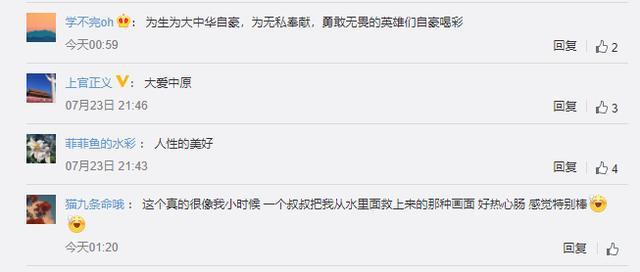жң¬ж–Үе°Ҷеұ•зӨәеҰӮдҪ•дҪҝз”ЁJAX/Flaxе®һзҺ°Vision Transformer (ViT) пјҢ д»ҘеҸҠеҰӮдҪ•дҪҝз”ЁJAX/Flaxи®ӯз»ғViT гҖӮ
Vision Transformer
еңЁе®һзҺ°Vision Transformerж—¶ пјҢ йҰ–е…ҲиҰҒи®°дҪҸиҝҷеј еӣҫ гҖӮ

ж–Үз« жҸ’еӣҫ
д»ҘдёӢжҳҜи®әж–ҮжҸҸиҝ°зҡ„ViTжү§иЎҢиҝҮзЁӢ гҖӮ
д»Һиҫ“е…ҘеӣҫеғҸдёӯжҸҗеҸ–иЎҘдёҒеӣҫеғҸ пјҢ 并е°Ҷе…¶иҪ¬жҚўдёәе№ійқўеҗ‘йҮҸ гҖӮ
жҠ•еҪұеҲ° Transformer Encoder жқҘеӨ„зҗҶзҡ„з»ҙеәҰ
йў„е…Ҳж·»еҠ дёҖдёӘеҸҜеӯҰд№ зҡ„еөҢе…Ҙ([class]ж Үи®°) пјҢ 并添еҠ дёҖдёӘдҪҚзҪ®еөҢе…Ҙ гҖӮ
з”ұ Transformer Encoder иҝӣиЎҢзј–з ҒеӨ„зҗҶ
дҪҝз”Ё[class]д»ӨзүҢдҪңдёәиҫ“еҮә пјҢ иҫ“е…ҘеҲ°MLPиҝӣиЎҢеҲҶзұ» гҖӮ
з»ҶиҠӮе®һзҺ°
дёӢйқў пјҢ жҲ‘们е°ҶдҪҝз”ЁJAX/FlaxеҲӣе»әжҜҸдёӘжЁЎеқ— гҖӮ
1гҖҒеӣҫеғҸеҲ°еұ•е№ізҡ„еӣҫеғҸиЎҘдёҒ
дёӢйқўзҡ„д»Јз Ғд»Һиҫ“е…ҘеӣҫеғҸдёӯжҸҗеҸ–еӣҫеғҸиЎҘдёҒ гҖӮиҝҷдёӘиҝҮзЁӢйҖҡиҝҮеҚ·з§ҜжқҘе®һзҺ° пјҢ еҶ…ж ёеӨ§е°Ҹдёәpatch_size * patch_size, strideдёәpatch_size * patch_size пјҢ д»ҘйҒҝе…ҚйҮҚеӨҚ гҖӮ
class Patches(nn.Module):
patch_size: int
embed_dim: int
def setup(self):
self.conv = nn.Conv(
features=self.embed_dim,
kernel_size=(self.patch_size, self.patch_size),
strides=(self.patch_size, self.patch_size),
padding='VALID'
)
def __call__(self, images):
patches = self.conv(images)
b, h, w, c = patches.shape
patches = jnp.reshape(patches, (b, h*w, c))
return patches
2е’Ң3гҖҒеҜ№еұ•е№іиЎҘдёҒеқ—зҡ„зәҝжҖ§жҠ•еҪұ/ж·»еҠ [CLS]ж Үи®°/дҪҚзҪ®еөҢе…Ҙ
Transformer Encoder еҜ№жүҖжңүеұӮдҪҝз”ЁзӣёеҗҢзҡ„е°әеҜёеӨ§е°Ҹhidden_dim гҖӮдёҠйқўеҲӣе»әзҡ„иЎҘдёҒеқ—еҗ‘йҮҸиў«жҠ•еҪұеҲ°hidden_dimз»ҙеәҰеҗ‘йҮҸдёҠ гҖӮдёҺBERTдёҖж · пјҢ жңүдёҖдёӘCLSд»ӨзүҢиў«ж·»еҠ еҲ°еәҸеҲ—зҡ„ејҖеӨҙ пјҢ иҝҳеўһеҠ дәҶдёҖдёӘеҸҜеӯҰд№ зҡ„дҪҚзҪ®еөҢе…ҘжқҘдҝқеӯҳдҪҚзҪ®дҝЎжҒҜ гҖӮ
class PatchEncoder(nn.Module):
hidden_dim: int
@nn.compact
def __call__(self, x):
assert x.ndim == 3
n, seq_len, _ = x.shape
# Hidden dim
x = nn.Dense(self.hidden_dim)(x)
# Add cls token
cls = self.param('cls_token', nn.initializers.zeros, (1, 1, self.hidden_dim))
cls = jnp.tile(cls, (n, 1, 1))
x = jnp.concatenate([cls, x], axis=1)
# Add position embedding
pos_embed = self.param(
'position_embedding',
nn.initializers.normal(stddev=0.02), # From BERT
(1, seq_len + 1, self.hidden_dim)
)
return x + pos_embed
4гҖҒTransformer encoder
еҰӮдёҠеӣҫжүҖзӨә пјҢ зј–з ҒеҷЁз”ұеӨҡеӨҙиҮӘжіЁж„Ҹ(MSA)е’ҢMLPдәӨжӣҝеұӮз»„жҲҗ гҖӮNormеұӮ (LN)еңЁMSAе’ҢMLPеқ—д№ӢеүҚ пјҢ ж®Ӣе·®иҝһжҺҘеңЁеқ—д№ӢеҗҺ гҖӮ
class TransformerEncoder(nn.Module):
embed_dim: int
hidden_dim: int
n_heads: int
drop_p: float
mlp_dim: int
def setup(self):
self.mha = MultiHeadSelfAttention(self.hidden_dim, self.n_heads, self.drop_p)
self.mlp = MLP(self.mlp_dim, self.drop_p)
self.layer_norm = nn.LayerNorm(epsilon=1e-6)
def __call__(self, inputs, train=True):
# Attention Block
x = self.layer_norm(inputs)
x = self.mha(x, train)
x = inputs + x
# MLP block
y = self.layer_norm(x)
y = self.mlp(y, train)
return x + y
MLPжҳҜдёҖдёӘдёӨеұӮзҪ‘з»ң гҖӮжҝҖжҙ»еҮҪж•°жҳҜGELU гҖӮжң¬ж–Үе°ҶDropoutеә”з”ЁдәҺDenseеұӮд№ӢеҗҺ гҖӮ
class MLP(nn.Module):
mlp_dim: int
drop_p: float
out_dim: Optional[int] = None
@nn.compact
def __call__(self, inputs, train=True):
actual_out_dim = inputs.shape[-1] if self.out_dim is None else self.out_dim
x = nn.Dense(features=self.mlp_dim)(inputs)
x = nn.gelu(x)
x = nn.Dropout(rate=self.drop_p, deterministic=not train)(x)
x = nn.Dense(features=actual_out_dim)(x)
x = nn.Dropout(rate=self.drop_p, deterministic=not train)(x)
return x
еӨҡеӨҙиҮӘжіЁж„Ҹ(MSA)
qkvзҡ„еҪўејҸеә”дёә[B, N, T, D] пјҢ еҰӮSingle Headдёӯи®Ўз®—жқғйҮҚе’ҢжіЁж„ҸеҠӣеҗҺ пјҢ еә”иҫ“еҮәеӣһеҺҹз»ҙеәҰ[B, T, C=N*D] гҖӮ
class MultiHeadSelfAttention(nn.Module):
hidden_dim: int
n_heads: int
drop_p: float
def setup(self):
self.q.NET = nn.Dense(self.hidden_dim)
self.k_net = nn.Dense(self.hidden_dim)
self.v_net = nn.Dense(self.hidden_dim)
self.proj_net = nn.Dense(self.hidden_dim)
self.att_drop = nn.Dropout(self.drop_p)
self.proj_drop = nn.Dropout(self.drop_p)
def __call__(self, x, train=True):
B, T, C = x.shape # batch_size, seq_length, hidden_dim
N, D = self.n_heads, C // self.n_heads # num_heads, head_dim
q = self.q_net(x).reshape(B, T, N, D).transpose(0, 2, 1, 3) # (B, N, T, D)
k = self.k_net(x).reshape(B, T, N, D).transpose(0, 2, 1, 3)
v = self.v_net(x).reshape(B, T, N, D).transpose(0, 2, 1, 3)
# weights (B, N, T, T)
weights = jnp.matmul(q, jnp.swapaxes(k, -2, -1)) / math.sqrt(D)
жҺЁиҚҗйҳ…иҜ»
- зҗҶи®ә+е®һи·өпјҢж•ҷдҪ еҰӮдҪ•дҪҝз”ЁNginxе®һзҺ°йҷҗжөҒ
- дҪҝз”ЁзҫҺеӣҪдё»жңәж—¶пјҢе“Әдәӣеӣ зҙ дјҡеҪұе“Қе»әз«ҷж—¶й—ҙпјҹ
- жҖҺж ·е®һзҺ°з”өи„‘еҫ®дҝЎеӨҡејҖпјҹиҜ·иҜ•иҜ•д»ҘдёӢж–№жі•пјҒ
- iPhoneз…§зӣёжңәеӨңй—ҙжЁЎејҸжҖҺд№Ҳжү“ејҖпјҹ
- iPhoneжҖҺд№Ҳи°ғж—¶й—ҙпјҹ
- iphoneеә”з”Ёе•Ҷеә—дёӢиҪҪдёҚдәҶиҪҜ件жҖҺд№ҲеҠһпјҢеә”з”Ёе•Ҷеә—зҡ„жӯЈзЎ®дҪҝз”Ёж•ҷзЁӢеҲҶдә«з»ҷеӨ§е®¶
- seoзІҫеҮҶеј•жөҒеҰӮдҪ•е®һзҺ°пјҢзҷҫеәҰзІҫеҮҶеј•жөҒжҺЁе№ҝж–№жі•
- зҰҒз”Ё445з«ҜеҸЈеӯҳеӮЁжҖҺд№ҲдҪҝз”Ё!еҰӮдҪ•е…ій—ӯ445з«ҜеҸЈ?
- ж·ҳе®қеә—й“әдјҳжғ еҲёжҖҺд№Ҳз”ЁпјҢж·ҳе®қеә—й“әдјҳжғ еҲёдҪҝ用规еҲҷ
- зҫҺеӣҫз§Җз§ҖеңЁзәҝдҪҝз”ЁиҜҒ件照вҖҰвҖҰеҰӮдҪ•дҪҝз”ЁжүӢжңәзҫҺеӣҫз§Җз§ҖжҠ еӣҫпјҹ




















